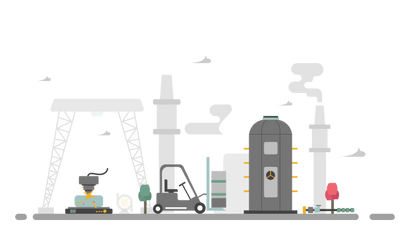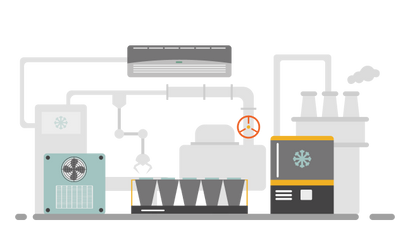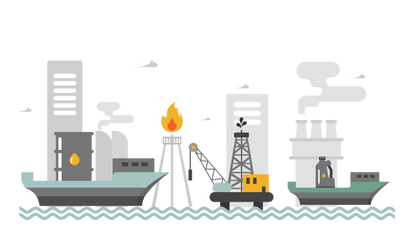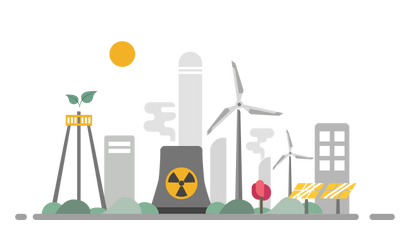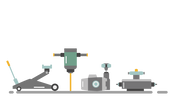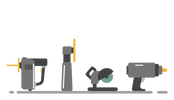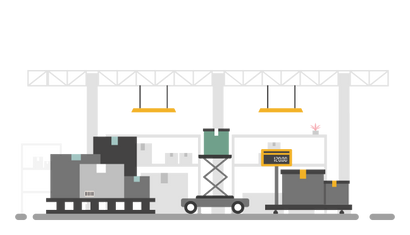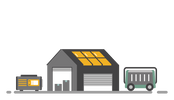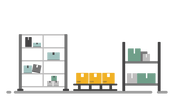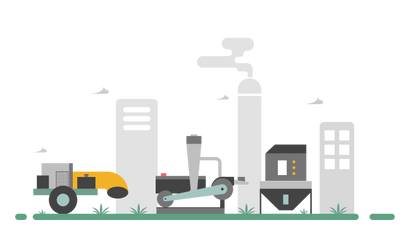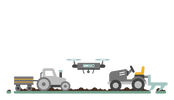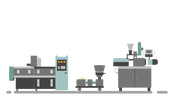Industry Directories
Need industrial equipment, parts, or services? Submit an RFQ and get quick quotes.Request for QuotationUtility
The utility sector refers to a category of companies that provide basic amenities, such as power, water, sewage services, electricity, steam, and natural gas. It is a large sector and an important part of the world economy. Its subcategories include Power Generation, Power Storage, Power Transmission and Distribution, etc.
Utility equipment refers to the machinery and infrastructure used by utility companies to generate, transmit, and distribute electricity, natural gas, and other forms of energy. Some examples of utility equipment include:
- Power generation equipment: boilers, turbines, generators, solar panels, wind turbines
- Power transmission equipment: high voltage power lines, substations, transformers
- Power distribution equipment: lower voltage power lines, substations, transformers, distribution poles and lines
- Natural gas distribution equipment: pipelines, compressors, metering stations
- Water treatment equipment: pumps, filters, storage tanks, water treatment plants
- Waste management equipment: trash compactors, incinerators, recycling equipment
- Telecommunication equipment: fiber optics, communication towers, microwave links
These pieces of equipment are used by utility companies to provide essential services to customers and communities. At Linquip you have access to the verified list of utility equipment manufacturers, suppliers, EPCs, and service and solution providers which helps you to find the best solution for your needs.
General Purpose
This category includes equipment which is usable in more than one specific industrial sector such as Compressor, Pump, Valve, Heat Exchanger, Bearing and Rollers, and more. Sometimes, special modifications are needed for these types of equipment to make them suitable for a particular purpose or industrial sector.
HVAC and Refrigeration Systems
The heating, ventilation and air conditioning (HVAC) equipment provide environmental comfort through thermal manipulation (heating and air conditioning) and acceptable indoor air quality (ventilation). Sometimes the refrigeration system is also included in the field as HVACR. In this category, you may find equipment including Boilers, Chillers, Cooling Towers, Furnaces, Burners, Coils, Condensers, Controllers, Heating, Humidifiers, HVAC Units, and more.







Oil & Gas
The Oil and Gas Sector is the sector of industry focused on exploration, data acquisition, development, drilling, production, gathering, refining, distribution, and transportation of hydrocarbons and includes but is not limited to major resource holders, national oil companies, multinational oil companies, drilling contractors, services contractors, and other related businesses. Its subcategories include Upstream, Midstream, and Downstream.
Renewable Energy
Renewable energy often referred to as clean energy, comes from natural sources or processes that are constantly replenished. It includes carbon neutral sources like sunlight, wind, rain, tides, waves, and geothermal heat. The term often also encompasses biomass as well. This type of energy source stands in contrast to fossil fuels, which are being used far more quickly than they are being replenished.
Renewable energy equipment refers to the various devices, systems, and components used to generate and store energy from renewable sources such as solar, wind, hydro, geothermal, and bioenergy. Some examples of renewable energy equipment include:
- Solar panels: used to convert sunlight into electricity.
- Wind turbines: used to generate electricity from wind energy.
- Hydro turbines: used to generate electricity from the kinetic energy of flowing water.
- Geothermal heat pumps: used to extract heat from the earth for heating and cooling buildings.
- Biomass boilers: used to convert biomass, such as wood chips or agricultural waste, into heat and electricity.
- Battery storage systems: used to store excess energy generated by renewable sources for later use.
- Inverters: used to convert direct current (DC) energy generated by renewable sources into alternating current (AC) energy that can be used by most electrical devices and appliances.
These types of equipment help to reduce the dependence on non-renewable energy sources, increase energy efficiency and reduce greenhouse gas emissions.
Hydraulic and Pneumatic
pneumatics and hydraulics devices are used in different applications such as manufacturing, transportation, earthmoving equipment, and vehicles. They each use a pump as an actuator, are controlled by valves, and use fluids to transmit mechanical energy. The main difference between the two systems is the medium used and applications. Pneumatics use a compressible gas while hydraulics uses relatively incompressible liquid. Both systems are popular based on their specialized applications. This category includes hydraulic pumps, motors, breakers, cylinders, flow meters, and pneumatic units, pumps, valves, manifolds, and more.
Measurement, Testing and Control
Test, Measurement, and Control devices are highly engineered devices, instruments, and systems, which are designed to monitor, measure, protect, control, and validate processes and applications across all industrial sectors. This category includes Controllers, Regulators, Sensors, Gauges, Transmitters, Diagnostic, Analysis devices, and more.
Production and Machine Tools
The Production and Machine Tool equipment are machines for handling or machining metal or other rigid materials, usually by cutting, boring, grinding, shearing, or other forms of deformation. This category covers both classic manufacturing machines such as Turning machines (lathes and boring mills), Shapers and Planers, Drilling machines, Milling machines, Grinding machines, Power saws, Hobbing machines, Honing machines, Broaching machines, Welding machines, Presses and also new manufacturing technologies such as Robotics, Laser cutting systems, 3-D printers and more.
Tools and Instruments
A tool is an object that can extend an individual's ability to modify features of the surrounding environment. This category includes Hand tools, Power tools, Fasteners, Gardening tools, Measuring tools, Electric tools, Hydraulic tools, Pneumatic tools, and more.
Warehouse equipment and supplies
A modern warehouse is a complex system of humans working with a variety of equipment to increase their performances. Choosing the right equipment is key in developing a productive, functional, and safe warehouse. Every warehouse has its own specification and needs, based on its purpose, size, and functions.
- There are different categories of devices used in warehouse, including but not limited to power generation, air conditioning, lighting, storage (from racks and shelving to refrigeration if necessary), docking, lifting and moving, packing. Linquip is your compass to find the best equipment, suppliers, and service providers to design, consult, choose, and buy your warehouse needs.
Environmental, Health and Safety
This is a general sector which contains equipment used to protect the health and safety of the workforce, employees, and the public as well as the environment from hazards associated with the workplace. This category includes Environmental Devices, Safety, and Respiratory Devices, Water and Wastewater Treatment Equipment, and more.
Food and Agriculture
The Food and Agriculture sector is composed of production, processing, delivery, and storage systems and facilities. Machinery in this sector covers all levels of farming and processing technologies, from simple and basic hand tools to more sophisticated and motorized equipment. Equipment and machinery in the food and agriculture sector ease and reduces labor improves the productivity of operations enhances market access and mitigates climate-related hazards. Its subcategories include food manufacturing, food processing, farm equipment & technology, harvesting equipment, utility vehicles, etc.





